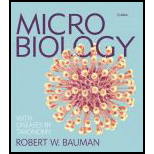
Concept explainers
Electrons zip around the nucleus at about 5 million miles per hour. Why don’t they fly off?
To explain:
The reason that why electrons that zip around nucleus at about 5 miles per hour do not fly off.
Introduction:
All the matter that is present in the universe is made up of small particles known as atom. The centre of the atom consists of dense nucleus formed with protons and neutrons, the subatomic particles.
Explanation of Solution
Each proton that is present in the nucleus of atom carries positive charge and neutron carries no charge. The charge on each electron is negative. Increase and decrease in the number of proton determines the atomic number of atom.
The negatively charged electrons are present in the orbitals that neutralize the positive charge present in the nucleus of atom. Electrons revolve around the nucleus of atom at very high speed of around 5 miles per hour but still do not fly off form their orbitals. This is due to the presence of chemical bonds in atom. Electrons are maintained in their respective orbital because of the attraction to the positively charged nucleus.
Due to the presence of chemical bonds or attractive forces in atom the high speed revolving electrons do not leave the orbitals of atom.
Want to see more full solutions like this?
Chapter 2 Solutions
Microbiology with Diseases by Taxonomy (5th Edition)
- Polonium is a rare element with 33 radioisotopes. The most common one, 210Po, has 82 protons and 128 neutrons. When 210Po decays, it emits an alpha particle, which is a helium nucleus (2 protons and 2 neutrons). 210Po decay is tricky to detect because alpha particles do not carry very much energy compared to other forms of radiation. They can be stopped by, for example, a sheet of paper or a few inches of air. This property is one reason why authorities failed to discover toxic amounts of 210Po in the body of former KGB agent Alexander Litvinenko until after he died suddenly and mysteriously in 2006. What element does an atom of 210Po decay into after it emits an alpha particle?arrow_forwardFigure 2.3 How many neutrons do carbon-12 and carbon-13 have, respectively?arrow_forwardThe magnesium electron spectrum has a line at 266.8 nm. Does it have a greater speed in a vacuum (an area without an atom or particle) than does red light with a wavelength of 652 nm? Why or why not?arrow_forward
- What may be the number of protons to number of neutrons ratio in our body? Explain Why?arrow_forwardAn atomic nucleus can be described by the analogy “like a marble in the Dallas Cowboys Stadium.” If a marble represents the atomic nucleus, what does the stadium represent?arrow_forwardAlchemists were medieval scholars and philosophers who were the forerunners of modern-day chemists. Many spent their lives trying to transform lead (atomic number 82) into gold (atomic number 79). Explain why they never succeeded.arrow_forward
- Which of the following is not a fundamental subatomic particle that forms elements? Which of the following is not a fundamental subatomic particle that forms elements? electrons protons nucleus neutronsarrow_forwardPolonium is a rare element with 33 radioisotopes. The most common one, P210o, has 84 protons and 126 neutrons. When P210o decays, it emits an alpha particle, which is a helium nucleus 2 protons and 2 neutrons. P210o decay is tricky to detect because alpha particles do not carry very much energy compared to other forms of radiation. For example, they can be stopped by a single sheet of paper or a few inches of air. That is one reason why authorities failed to discover toxic amounts of P210o in the body of former KGB agent Alexander Litvinenko until after he died suddenly and mysteriously in 2006. What element does an atom of P210o change into after it emits an alpha particle.arrow_forwardAt the beginning of an experiment, a scientist has 268 grams of radioactive goo. After 180 minutes, her sample has decayed to 4.1875 grams.What is the half-life of the goo in minutes? Find a formula for G(t)G(t), the amount of goo remaining at time tt. How many grams of goo will remain after 32 minutes?arrow_forward
- Many spontaneous reactions occur very slowly. Whydon’t all spontaneous reactions occur instantly?arrow_forwardIf we removed a neutron from an atom, what would happen to the atom? Group of answer choices: a) its mass would change b) it would have a positive charge c) it would become a different element d) it would become polar e )it would have a negative chargearrow_forwardPart A Which of the following is NOTa subatomic particle? molecule O neutron proton electronarrow_forward
 Biology 2eBiologyISBN:9781947172517Author:Matthew Douglas, Jung Choi, Mary Ann ClarkPublisher:OpenStax
Biology 2eBiologyISBN:9781947172517Author:Matthew Douglas, Jung Choi, Mary Ann ClarkPublisher:OpenStax Concepts of BiologyBiologyISBN:9781938168116Author:Samantha Fowler, Rebecca Roush, James WisePublisher:OpenStax College
Concepts of BiologyBiologyISBN:9781938168116Author:Samantha Fowler, Rebecca Roush, James WisePublisher:OpenStax College Principles Of Radiographic Imaging: An Art And A ...Health & NutritionISBN:9781337711067Author:Richard R. Carlton, Arlene M. Adler, Vesna BalacPublisher:Cengage Learning
Principles Of Radiographic Imaging: An Art And A ...Health & NutritionISBN:9781337711067Author:Richard R. Carlton, Arlene M. Adler, Vesna BalacPublisher:Cengage Learning
 Biology Today and Tomorrow without Physiology (Mi...BiologyISBN:9781305117396Author:Cecie Starr, Christine Evers, Lisa StarrPublisher:Cengage Learning
Biology Today and Tomorrow without Physiology (Mi...BiologyISBN:9781305117396Author:Cecie Starr, Christine Evers, Lisa StarrPublisher:Cengage Learning





